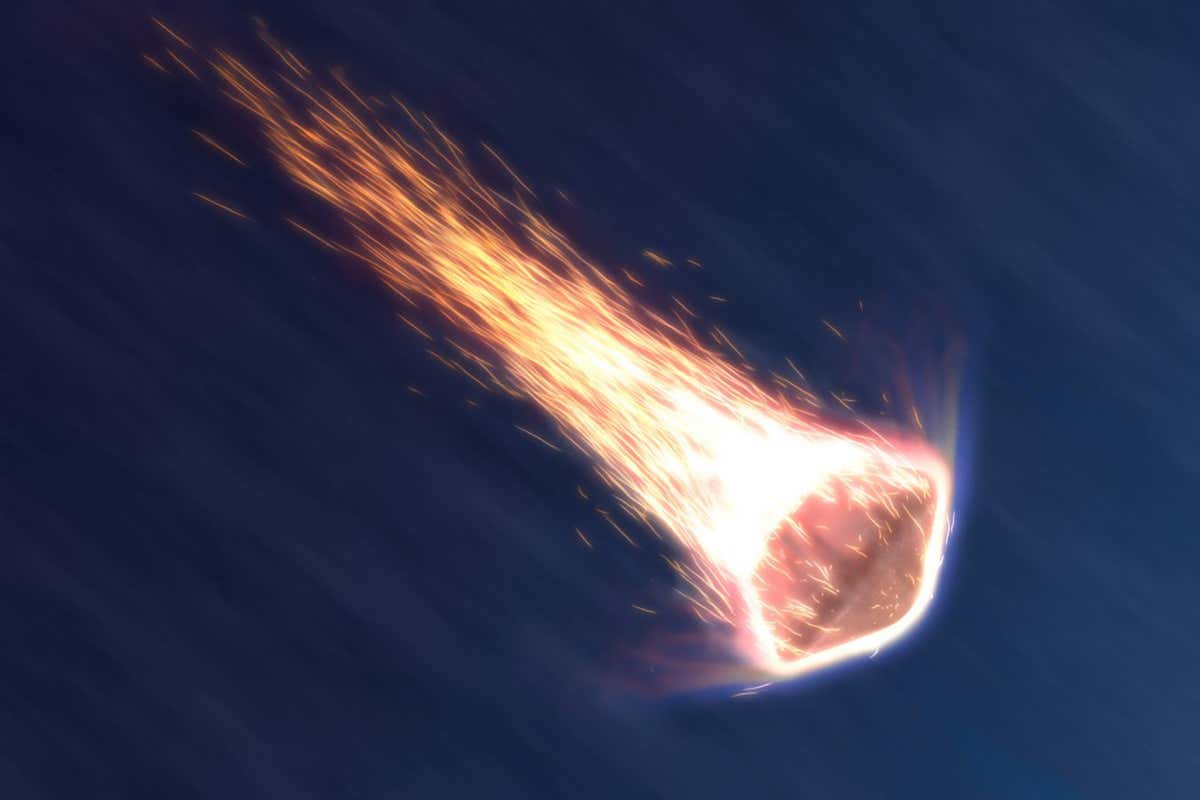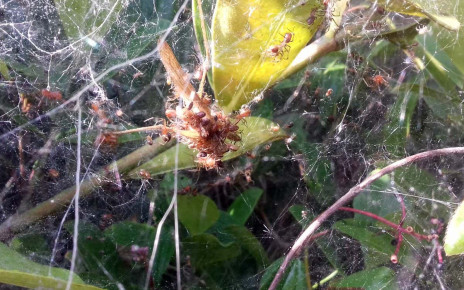[ad_1]

Illustration of the OSIRIS-REx sample return capsule passing through Earth’s atmosphere
NASA Goddard Space Flight Center/CI Lab
Bits of the asteroid Bennu are coming back to Earth. NASA’s OSIRIS-REx spacecraft took samples of the asteroid in 2020, which are arriving on Earth on 24 September.
OSIRIS-REx launched in 2016 and entered orbit around Bennu in 2018. Bennu was chosen as a target primarily because of its relatively small distance from Earth – at the time of launch, it was about 225 million kilometres away, and in the intervening years it got as close as 50 million kilometres from Earth.
Because of its regular close approaches, Bennu is considered a near-Earth object (NEO). It’s not expected to smash into our planet anytime soon, but there is about a 0.057 per cent chance of a collision in the next 300 years. Bennu is about 490 metres across, so if it did crash into Earth it would cause significant damage.
Figuring out how to protect Earth from Bennu and asteroids like it is one reason to study it, but another is that it is one of the most primitive asteroids that we know of. “Asteroids like Bennu are time capsules from the early solar system, debris that’s left over from the formation of the solar system,” says Anjani Polit at the University of Arizona, part of the OSIRIS-REx team.
Such asteroids probably clustered together to form our solar system’s planets, so we can use them to understand how the planets formed and grew. Bennu in particular hosts large concentrations of carbon, which is the main building block for organic molecules – which in turn are the building blocks for life as we know it.
“We’re pretty sure that there will be organic molecules in these samples,” says OSIRIS-REx scientist Michelle Thompson at Purdue University in Indiana. “Studying these organic molecules might help us understand what organics were around in the early solar system that could have seeded life on Earth.”
Similar samples have already been returned by Japan’s Hayabusa 2 spacecraft, which visited an asteroid called Ryugu. Comparing the two samples of asteroid dust will be a key component to researchers’ goal of understanding the history of the solar system.
“Let’s say you are a visitor to Earth and you want to learn all about Earth’s geologic history, so you pick up one rock – you’re never going to be able to learn that,” says Thompson. “Going to more than one different asteroid really opens up a whole new world to really understand the diversity of material that was around 4.5 billion years ago”, which is about when the solar system formed.
On 24 September, the day will start early for the OSIRIS-REx team. In the wee hours of the morning, the team’s engineers will make a call about whether it is safe to release the sample capsule. If they give the “go”, it will be sent hurtling towards Earth from about 102,000 kilometres away, more than a quarter of the distance to the moon. It will travel for about four hours before slamming into the atmosphere at about 44,000 kilometres per hour. During its descent, it will be protected and slowed by a heat shield and two parachutes until it touches down in the Utah desert.
“Once we release the capsule, there’s nothing else we can do except wait and hope everything goes smoothly,” says Polit. “All these years of work, it all comes down to that 13-minute descent through the atmosphere.” If the capsule cannot be released on 24 September, it’ll be two years before there’s a chance to try again.
If it can be released, though, the OSIRIS-REx spacecraft will continue on towards an extended mission at the asteroid Apophis. On Earth, the sample it drops will be immediately scooped up and sent to Houston for scientists to begin their analysis. “I honestly feel like a kid on Christmas Eve,” says Thompson. “I’m about to wake up and get all these gifts of samples from Bennu.”
Topics:
[ad_2]
Source link




